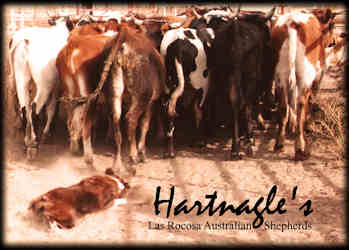 |
||
|
Education: Books, Videos & Herding Clinics
|
The History of The Australian Shepherd Club of America
After ASCA's formation in 1957 a few, brief newsletters served a small, but dedicated fancy. The National Stock Dog Magazine and Stodghill's Animal Research Magazine provided the largest part of information distributed among Aussie fanciers. The years following 1957 and until 1969 was for all practical purposes a period of inactivity for the Australian Shepherd Club of America. While the publications linked fanciers together; it was the regional clubs during the mid sixties in Arizona, California, Colorado, and in Oregon that fostered the development and promotion of the breed as a whole. December 1969, however produced the first (Vol. 1 No. 1) but not last issue of the Aussie Times. It was published three times a year April, August and December. At that time, membership in ASCA cost $5.00 annually (additional members of the same household $1.50 each). Single memberships were $3.50 annually. As a special benefit of ASCA membership at that time, a free subscription to the National Stock Dog magazine, ( a $2.00 value) was included. The ASCA membership application queried applicants on: Main interests relative to the Breed:
Highlights from the editorial, written by Elsie Cotton who was then Vice President of ASCA included:
She went on to say:
The For Sale Section included ten listings with phrases such as:
The following reminder appeared in subsequent issues of the Aussie Times until the end of 1972:
In the 60s, it was understood that Aussies were working dogs. The issues of late 60s included learning about genetics of the breed, mainly about the white factor and the NBT (natural bob tail) in the Breed. Australian Shepherd owners began asking questions about AKC recognition and OFA and Hip Dysplasia was introduced to the fancy. In addition to the various club newsletters, and the Aussie Times, the DogWorld magazine and the Western Horseman were the most widely read publications by Australian Shepherd owners. In the early days, breeders would travel between Arizona, California, Colorado and Oregon simply to participate in a Rare Breed or local Australian Shepherd Club function. The awards consisted of a ribbon, maybe a trophy. The real motivation was to meet and fellowship with Australian Shepherd people and mainly to see the Aussies of these other areas. ASCA Highlights: Once again, the Aussie Times gets a new look. Beginning with the April issue, the new ASCA logo appears on the cover as well as the notice: BREED CLUB REGISTRY Established March 10, 1972. This was a very significant step for the breed, which was to become the single largest Breed Registry in the country. The Editors Note:
Aussies were being exhibited extensively in the Western United States with significant numbers of shows and large entries at the various events. Aussies competing at sanctioned matches quite often competed in the Group against AKC breeds. There is Interest in AKC recognition. Phillip Wildhagen, ASCA's Eastern Representataive represents ASCA as they pursue a level of communication with officials within AKC. Phillip Wildhagen reports the fact that the Australian Shepherd breed "is relatively unknown here in the East." ~ Ernest Hartnagle & Jeanne Joy Hartnagle-Taylor
Copyright photos provided from the Hartnagle family archives.
|
|